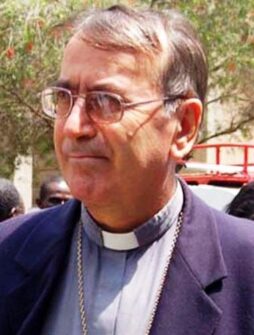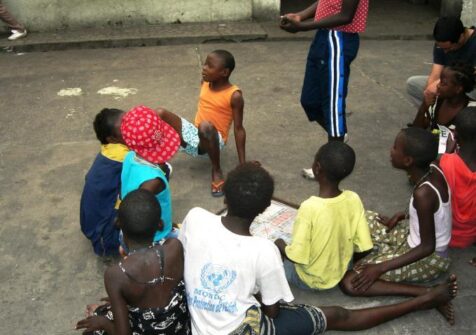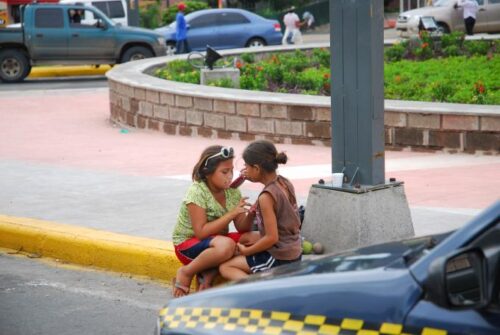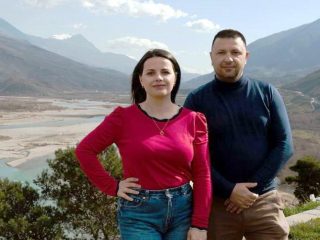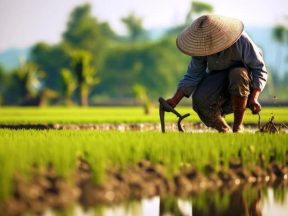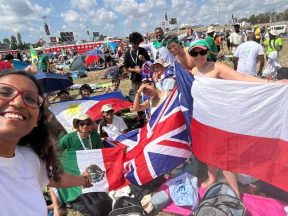The hyena, the goat, the leopard and the hare.
The hyena’s home was near a river, and he owned a little canoe of which he was exceedingly proud. Most hyenas are very greedy and this one was no exception. He also happened to be very hungry, for he had not eaten for several days.
So early in the morning he climbed into his canoe and paddled across the river to see what he could find on the other side. Like the rest of his family, he was a thief and seldom made his living by honest means.
He dragged the canoe into the reeds next to the river and tied it securely. Then he went in search of something to eat. Before long he came to a little footpath that led towards a forest. After following it for some time, he came to a village. He approached it stealthily, because he was a coward as well as a thief. To his joy he found it deserted, the occupants being away at a beer drinking party.
“I am indeed fortunate,” he said, pushing open the door of a hut.
Inside he found a large basket of meal, and rubbed his paws together with joy. “This will provide many meals for me,” he chuckled as he dragged it outside.
He then went to the next hut, where he broke down the door and found a goat tethered to the centre pole. This he took, and tied it to the basket of meal before exploring the contents of the third hut. In it he found a leopard, also tied up, and he added it to the goat and the basket of meal. He picked up the basket and, dragging the goat and the leopard after him, hastened back to the place where he had left his canoe.
But once there his troubles began. The canoe was so small that he could carry only two of his new acquisitions at a time. How could he get all his booty over safely? If he were to take the two animals over on the first trip and then return for the basket of meal, surely the leopard would eat the goat! Should he take the leopard over first, then without doubt the goat would eat the meal! This was a matter far too complicated for the dim-witted hyena to work out.
He was sitting woefully on the riverbank, wondering what to do, when Kalulu the Hare sauntered by. “Good day to you, my friend,” the hare said. “What is troubling you, that you look so miserable?”
“Oh, Kalulu,” replied the hyena, “I am greatly puzzled as to how to get my three purchases over the river, for my canoe is too small to take everything over at the same time. If I take the goat and the leopard first, surely the leopard will eat the goat while I return for the meal! And if I take the goat and the meal over together, the goat will eat the meal while I return for the leopard. Kalulu, I am greatly perplexed!”
Kalulu never failed to turn the problems of others to his own advantage, so after a moment’s thought he said, “Why, Hyena my friend, that is easy. First you must take over the goat and the leopard. But bring back the leopard with you when you return for the meal. In that way both the goat and the meal will be safe.”
“What a true friend you are, Kalulu,” said the hyena gratefully, and at once followed the hare’s advice.
He took the goat and the leopard over on the first trip, and brought back the leopard on his return to fetch the meal.
But while he was away, Kalulu filled a bag that he carried over his shoulder with meal from the hyena’s basket.
He was strolling away when the hyena returned and exclaimed, “Oh, Kalulu, a thief has stolen half my meal!”
“No,” answered Kalulu, “it was not a thief who took your meal. I took it as payment for the excellent advice I gave you just now. Surely you must admit that this is only just and fair!” And with a low bow he continued on his way, leaving the hyena to ponder on the ways of justice.
Folktale from Zambia





